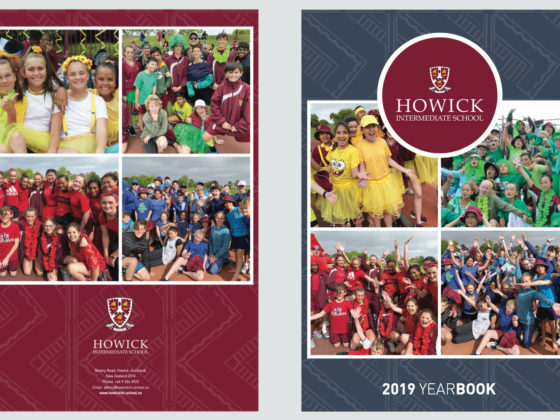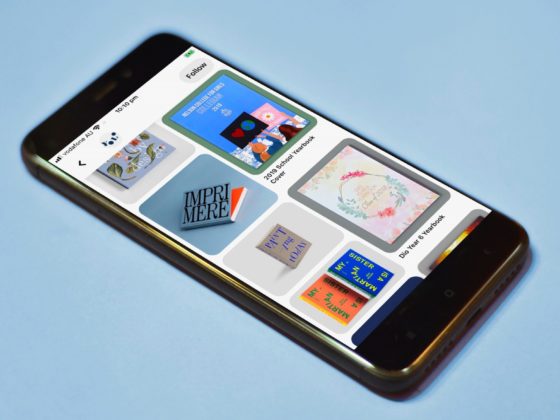Interview conducted and written by John Shafer, Director of Spacific Creative
Introduction
Years ago, when visiting the archive room of Sacred Heart College in Auckland, I was struck by the smell of dust – over 100 years of age on the documents and yearbooks. Everything in the cramped, contained space told the stories of the students, from academic achievements to World War II conscription. Most of the boys featured in these publications are now much older, have become pillars of the community, including a boatload of All Blacks, and some have passed away. But the stories of their youth still live on in these old publications.
These days there are many different ways to record and communicate your student’s achievements and events that have shaped your school. But the skill set for recording and communicating these stories has not really changed.
Angela Little comes from a background in communication in the private sector and was lured to the position because of the variety and the human interaction. She is very sociable and likes talking to people: she likes building relationships – relationships that help bind the community together. Angela admits that she is “quite demanding” when it comes to getting yearbook content, on schedule, but since she has built up a good rapport with the school, the content now comes fairly easily.
It did not come easily however, 7 years ago, as her position was a new one. Now, after putting in some good systems, she keeps her finger on the pulse of the school with the annual, monthly and weekly planner and multiple to-do lists, at her fingertips. When needed, she pops into the staff room next door to her office to catch up with teachers and management. I am pretty sure there is nothing that goes on at the school that she is not aware of.
She manages all social media and the website for the College as well as the print media. This includes the 164-page yearbook and the biannual magazine Confortare. The social media requires daily input whereas the other publications demand a long-term planned approach that starts in February, 9 months before delivery.
Her mother was the organised parent but her father may have handed down his ability to turn chaos into order. “Dad’s office was the worst mess you have ever seen in your life. He also had the world’s biggest garage and every single tool had its place where it was stored. He also taught me to think outside the square for problem-solving”.
The Yearbook Purpose
Angela sees the yearbook as two things. Firstly an archival document for the history of the College and secondly the boys’ yearbook; “it is their yearbook, not mine”, she says, which drives the quest for content. “What do the boys want to read and what is important for the school historically to keep in mind, so that in the years to come they know what happened in the school in 2019”. Each year she has introduced more student voices by getting them to write more articles.
“I think if the boys could have a yearbook full of photos that is all they would want. They love photos! Honestly, if you go out there with a camera they would say ‘Miss take my photo’, it’s hilarious”.
The Yearbook Process
For the yearbook, Angela starts in late February/early March with her page plan. “If I did not have a page plan I would not have a clue”, she says. “Once you have a page plan it is just much easier to manage”.
She also takes most of the photographs needed for the yearbook herself. “I have always liked photography and I need to be at most of the events anyway”. When not on campus, one of the Brothers from the church fills in the gaps.
Armed with her camera, term planner and a team of 4 boys, she meticulously tracks every article and photo. Making sure every event is covered, every photo taken, every article delivered, to the correct word count and on deadline. This content is collated throughout the year until it all comes together at the end of the year.
When asked how she motivates contributors to provide her with content she comments, “They are really good now… it is about building good relationships with people. I’m always very factual, I say to them this is what I would like you to write. This is the word count, this is the due date, here are some things to help you with it and if you have any queries please do not hesitate to get in touch”.
We estimated it might take her over 250–300 hours, roughly 2 hours per page over the course of the year to create the yearbook – 5% of her job. She is fortunate to have access to a professional proofreader who reads every article after she edits them. Her 3-tier content system is Raw, Edited, Final. The final version is sent for layout with the corresponding images.
Her proofing process is thorough. “Once receiving the proofs, I check the publication in this order. 1) Headings 2) Table of Contents matches pages allocated 3) Subheadings 4) All class and team photos and then 5) I will read the book throughout”.
Delivery of the final product she finds very satisfying, as it completes the year nicely and there’s a good sense of accomplishment. She comments when asks how she felt about being the yearbook coordinator “It’s a big job, weirdly I actually enjoy it more than putting the Confortare (a biannual magazine) together and I don’t know why… maybe it is because it is the whole year and you are bringing it together”.
When asked what would be the key attributes of an ideal yearbook coordinator, Angela commented; “Organised, methodical, creative, and being a relationship builder. As much as it is a big job, provided you are very organised, it should not be insurmountable”.



